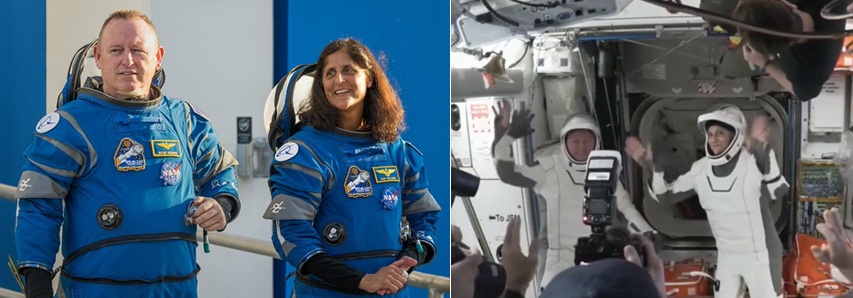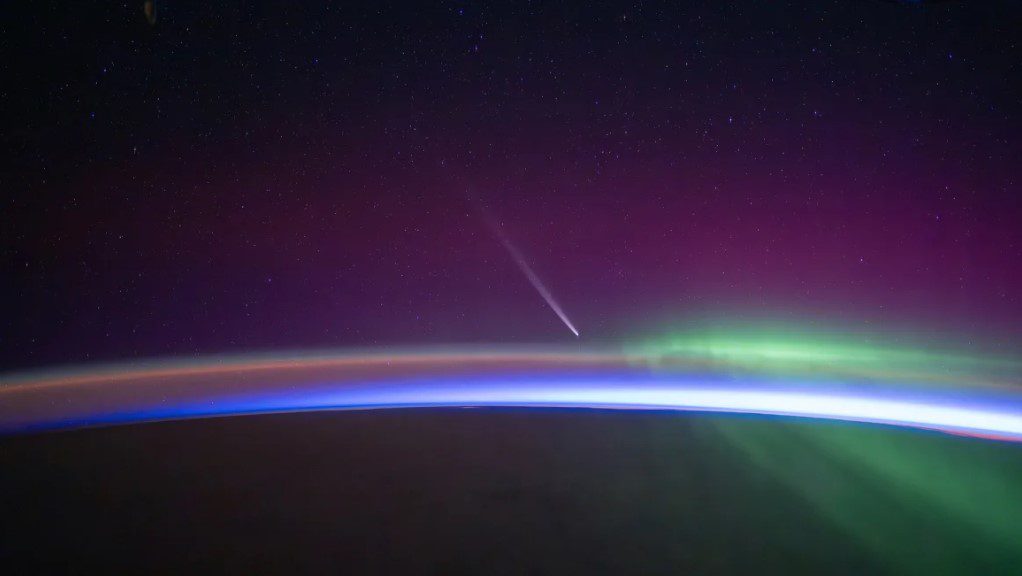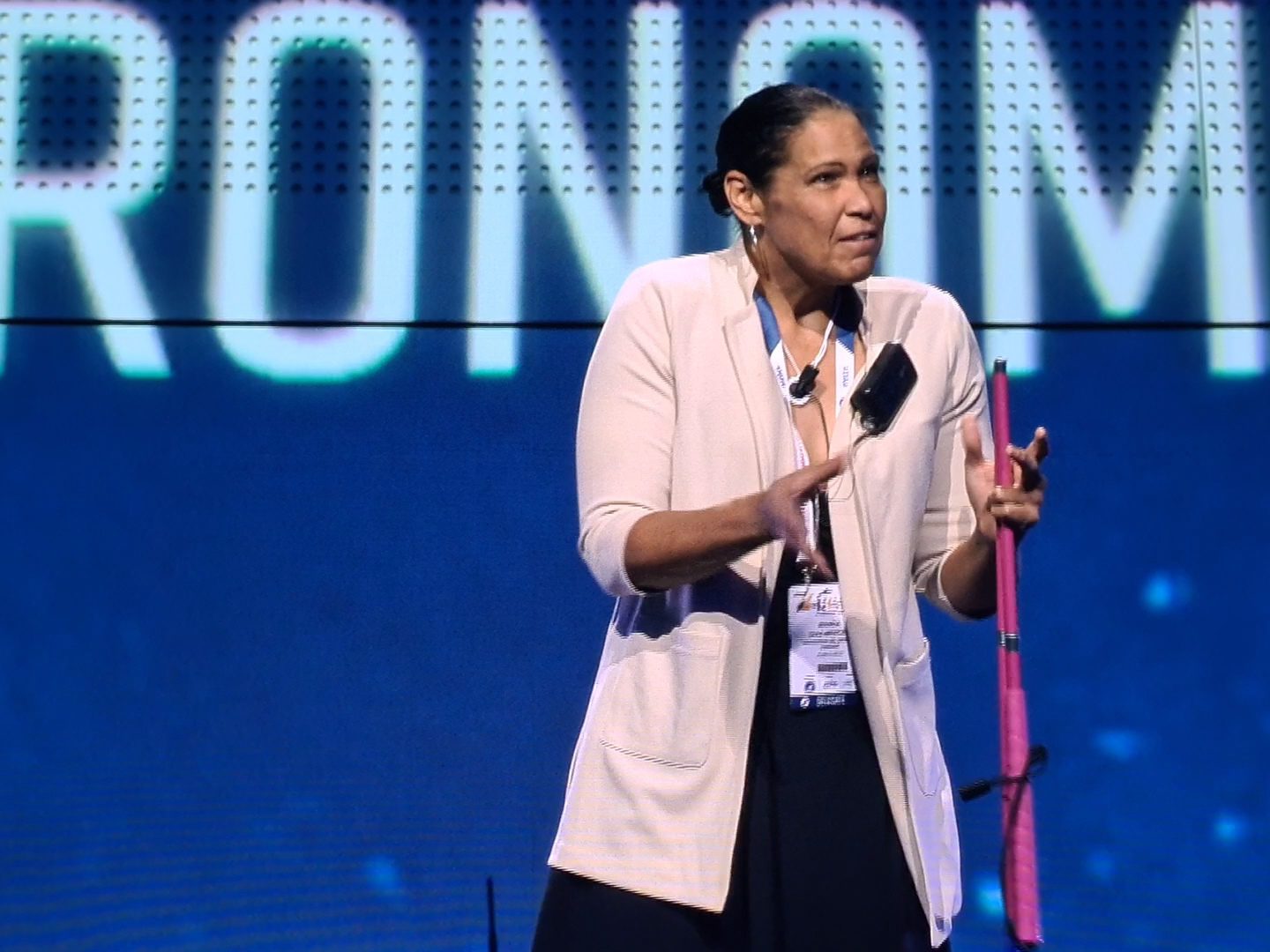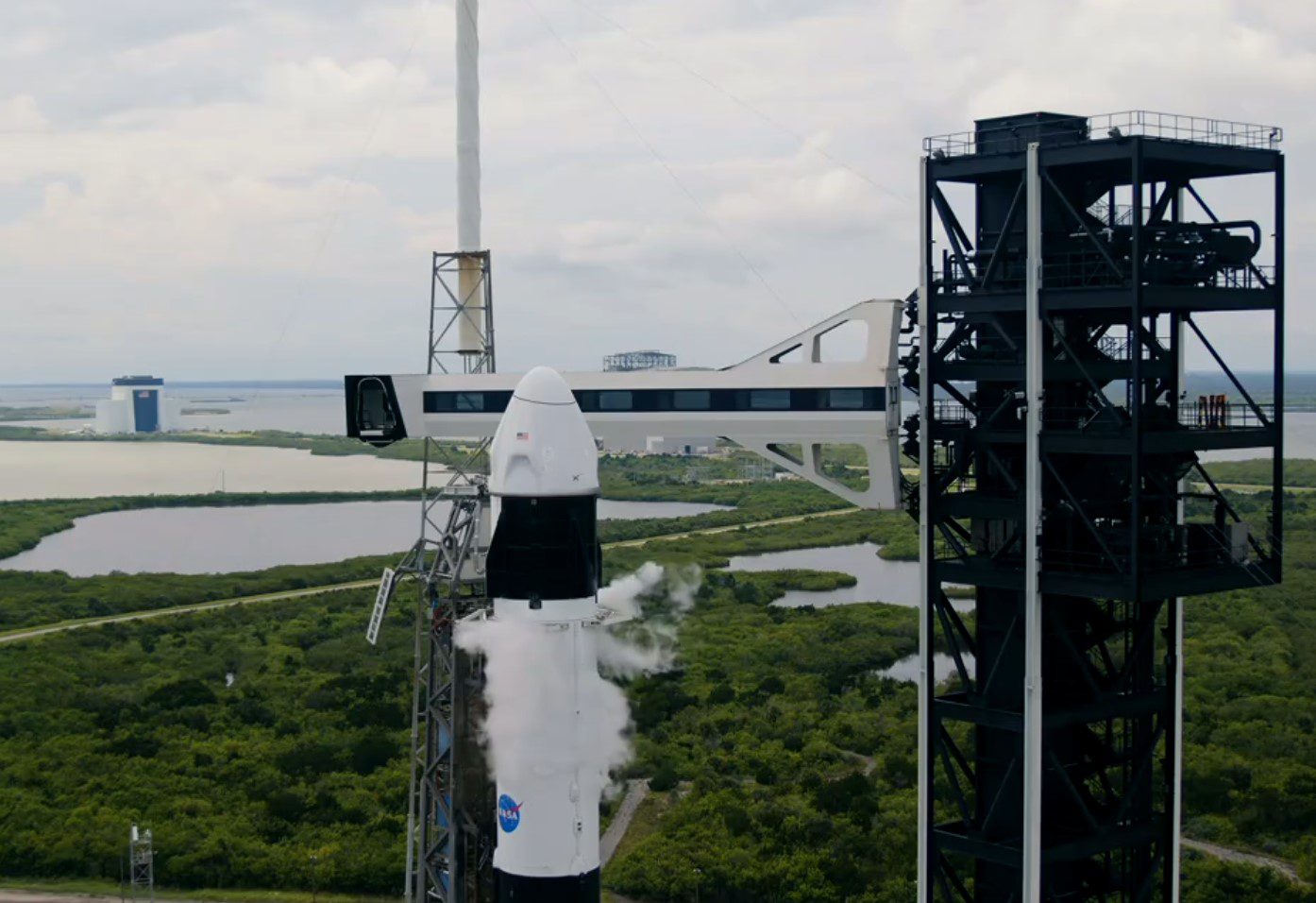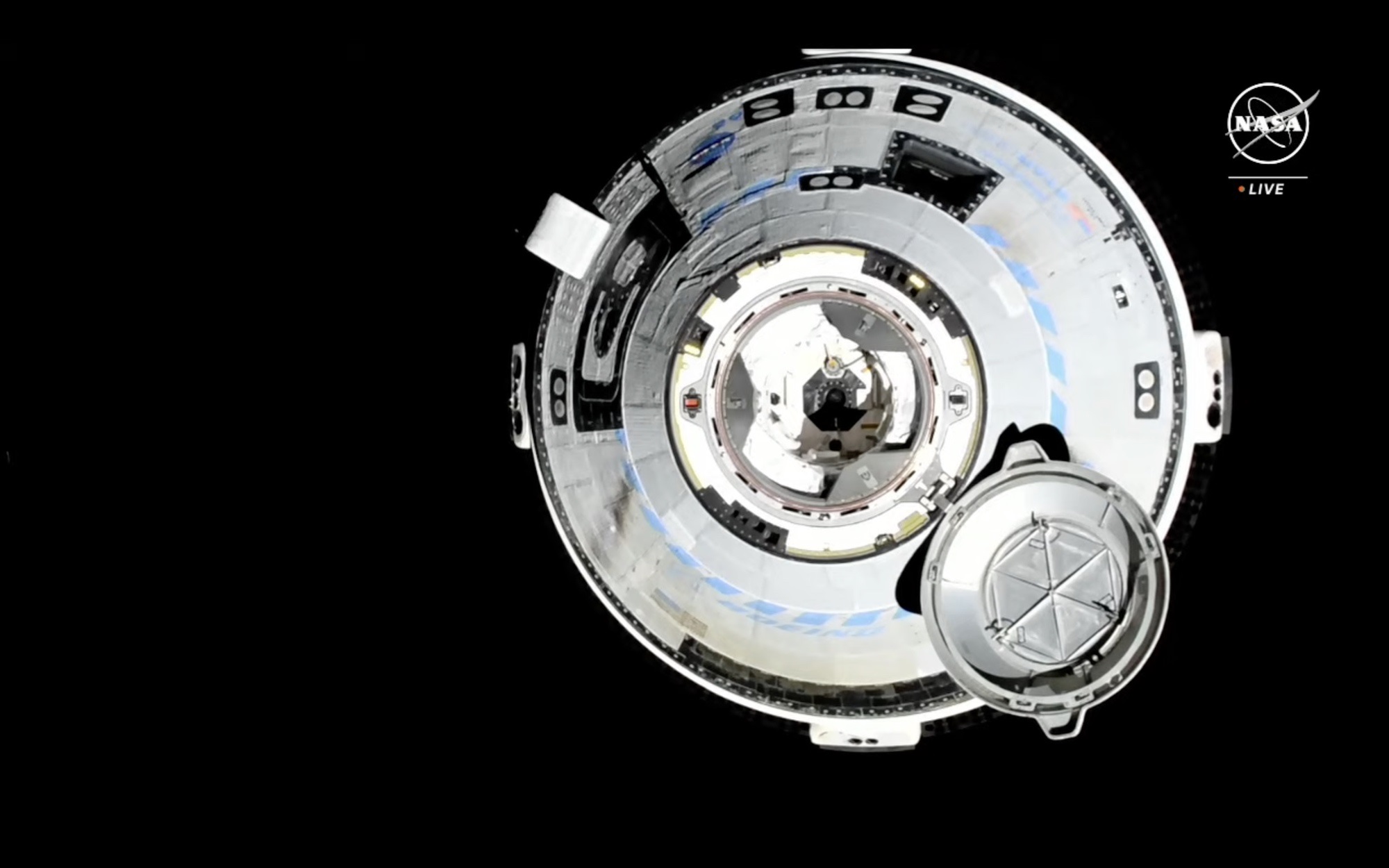A Soyuz U launch vehicle successfully launched Progress M-019M (ISS-51P) on its mission to the International Space Station from the Baikonur Cosmodrome located near Tyuratam in Kazakhstan. Aboard were 2.5 tons of cargo and supplies for the astronauts aboard the International Space Station. Due to orbital alignments, the passage to the space station will take the slower route lasting two days rather than the shorter six hour trip. Soon after launch an issue was reported involving the failure to deploy of one of the antennas needed for the KURS automatic docking system. Engineers are attempting to recover the antenna to its correct position
One of the KURS antennas is stuck in its folded/hinged forward in launch configuration. Courtesy: NASA
Update: While the KURS system and hence antenna is not essential for docking (the craft can be remotely manually controlled and docked), analysis of the latest information from Russian space sources quoted by news agency Interfax is that the KURS antenna has to be locked into its correct deployment position if a docking is to occur. In its current still folded position, it might physically interfere with the latching probe and pressurised seal of the docking system. One way round this would be for the Progress craft to approach close to the International Space Station and for a spacewalking astronaut to physically move the antenna to allow a final docking to take place.

